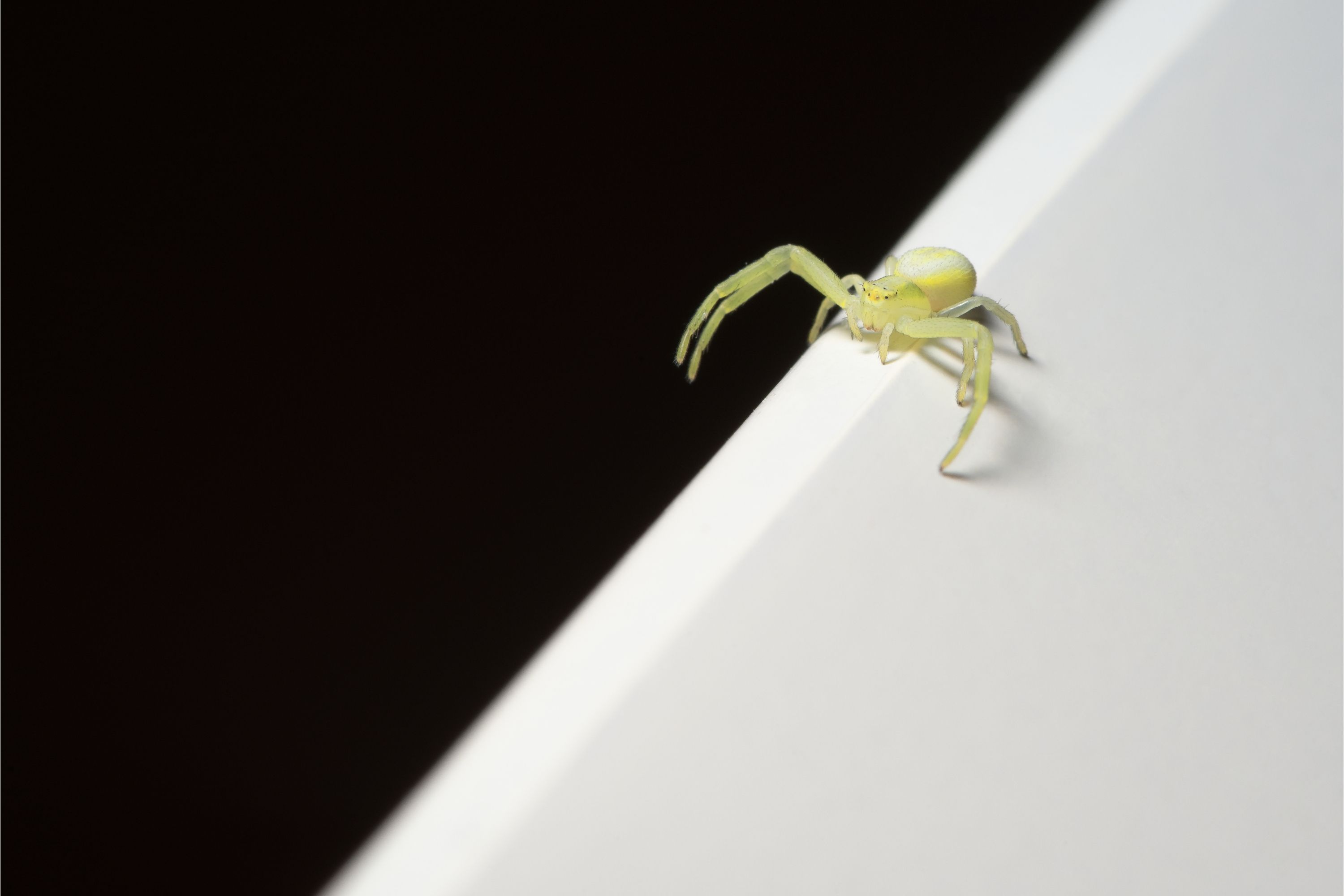Black-footed yellow sac spider
(Cheiracanthium inclusum)

Description
Cheiracanthium inclusum, alternately known as the black-footed yellow sac spider or the American yellow sac spider (in order to distinguish it from its European cousin C. punctorium), was formerly classified as a true sac spider (of the family Clubionidae), and then placed in the family Miturgidae, but now belongs to family Cheiracanthiidae. It is a rather small pale yellow species that is indigenous to the Americas and can be found living in the foliage of forests and gardens but also can inhabit human homes. Despite common beliefs of necrosis, Cheiracanthium bites cause only localized swelling. C. inclusum is closely related to Cheiracanthium mildei, an introduced species native to Europe which is similar in appearance and natural history and can also be found in North American homes. Like all spiders, C. inclusum has two body segments: a cephalothorax (fused head and thorax) and an abdomen. In females, the body measures between 5 and 9 mm and in males, 4 to 8 mm. The leg span however can be up to 1 inch (2.5 cm) with the front pair of legs being longer than the other 3 pairs. Males tend to have a narrower body and a larger leg span than females. C. inclusum gets its two common names (yellow sac and black-footed spider) from its appearance. It is a pale yellow-beige colour with dark brown markings on its palps, chelicerae (jaws) and on the ends of its tarsi (feet). There is also often an orange-brown stripe running down the top-centre of its abdomen. C. inclusum has 8 similarly sized eyes, distributed in 2 parallel horizontal rows. However, ocular input is of minor import, due to the absence of light during the spider's nocturnal activities. The spider relies more on its palps, sensory structures just behind the chelicerae, on the cephalothorax, to sense its environment. C. inclusum are native to the New World (North, Central, and South America; and West Indies). This species has also been introduced to Africa and Réunion. They are most often found in trees and shrubs, but may also find shelter in houses and other human-made structures. Females of C. inclusum mate only once, and produce their first egg mass about 14 days after mating. Two sets of eggs are usually produced, but this can range anywhere from 1 to 5. Egg masses generally contain 17 to 85 eggs, although as many as 112 eggs have been reported in a single egg mass.
Taxonomic tree:







